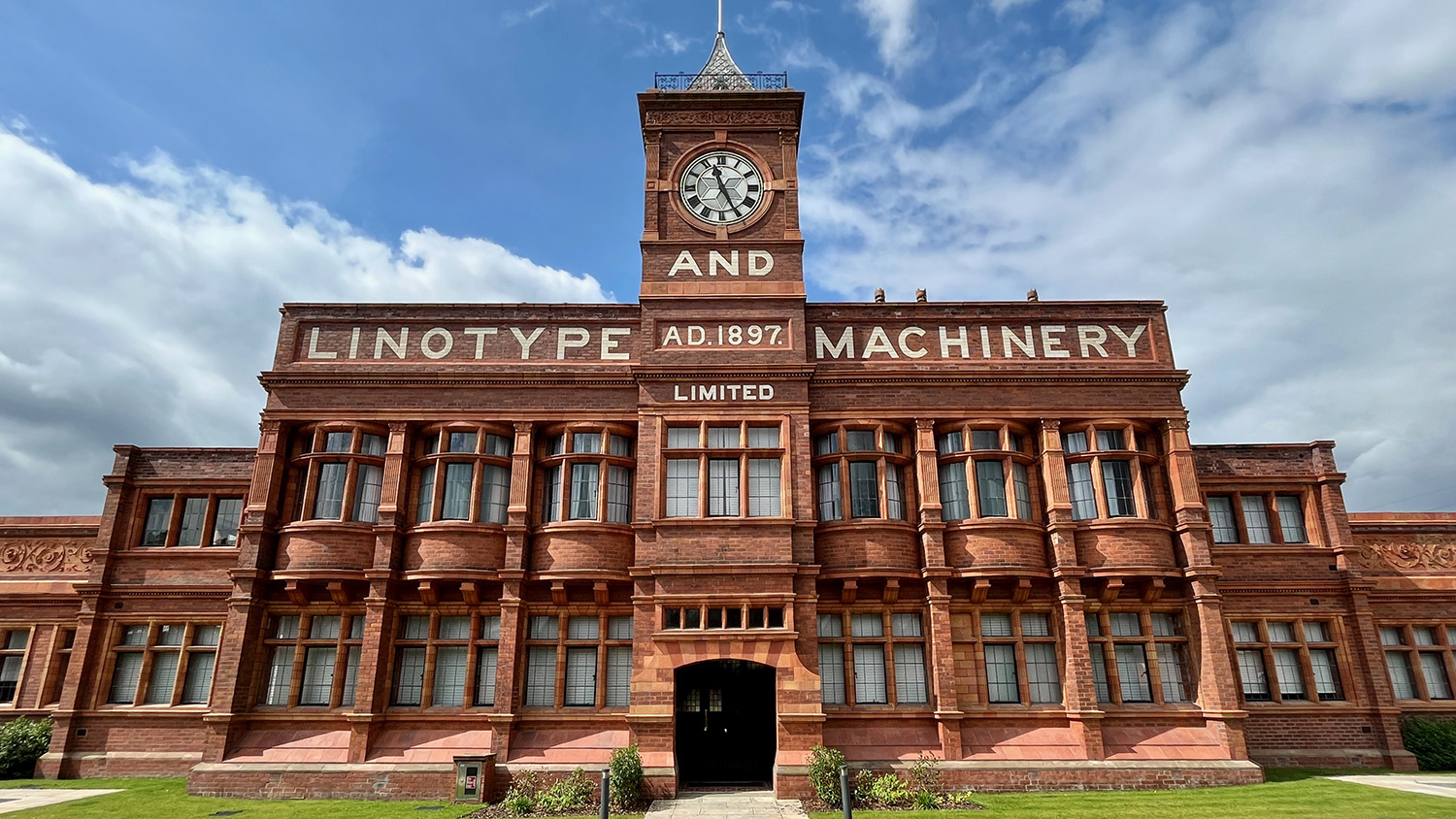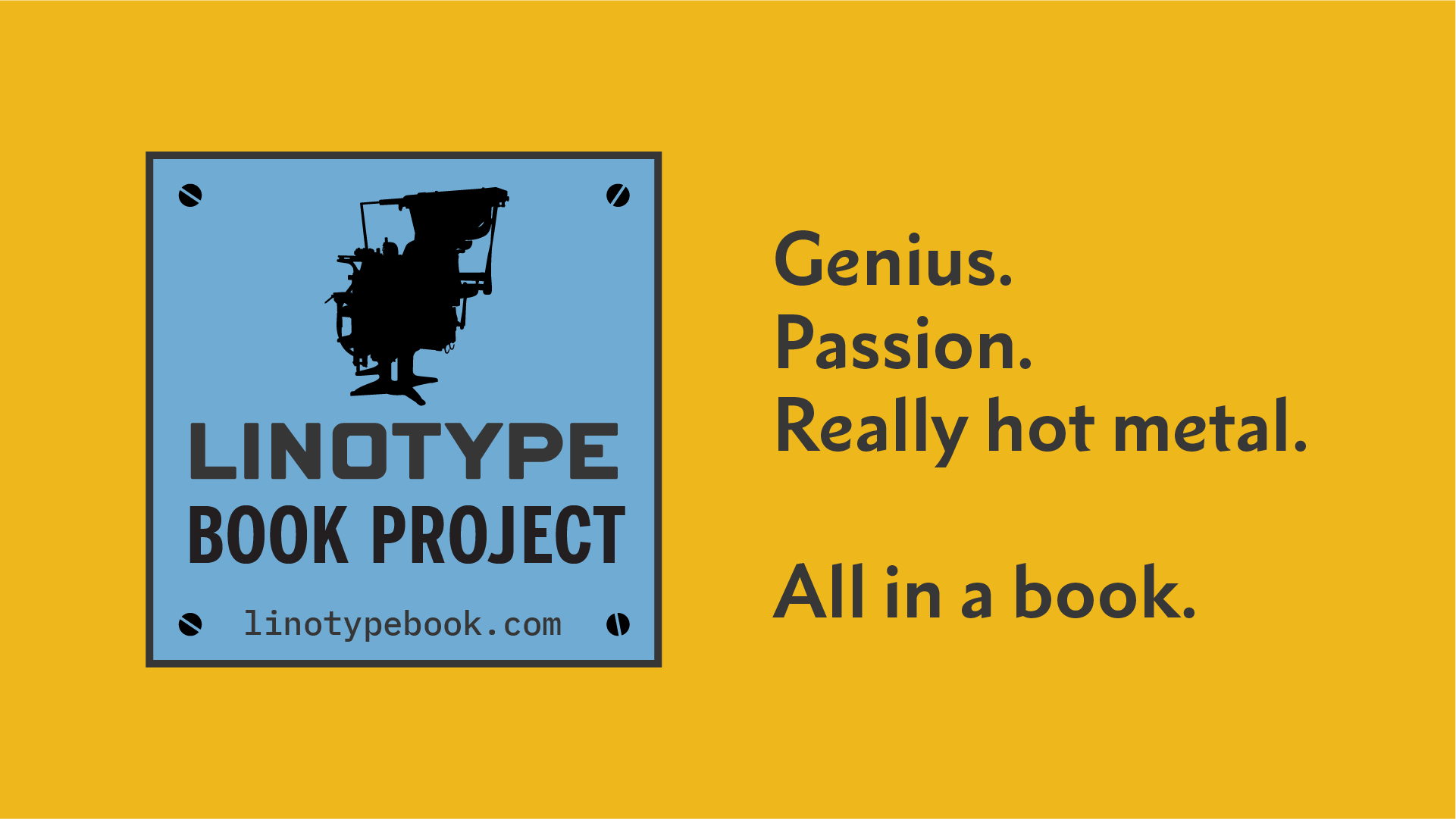
The Box at the Museum
Discovering images hidden for over 75 years…
Published: 15 Oct 2024
Topics: History, Linotype, Typography, Travel
TL;DR: At the Ottmar Mergenthaler museum in Germany, I discovered a box of rare images
I Simply Have to Visit, Right?
Recently while planning a work trip to Frankfurt, Germany I realized I would be a mere two hours away from the birthplace of Ottmar Mergenthaler, the inventor of the Linotype. I had heard there was some sort of small museum for Mergenthaler in the village, but had no idea what to expect.

Looking up Hachtel, DE on Google street view, I learn that it is such a small town the Maps car didn’t drive all of the streets. But there was a sign on the edge of town that caught my eye: Ottmar-Mergenthaler-Straße. I couldn’t see down the street far enough to see the museum building, but seeing that sign solidified my desire to visit.
Up for Another Road Trip?

As I started planning, I realized how rural Hachtel truly is — from Frankfurt it was a train ride, then another train ride, then a bus ride (which maybe didn’t run on Sundays?). My lack of speaking German and the uncertainty of the bus schedule had me worried since the museum is only open the first Sunday of each month.
But then I remembered a trick from my “Linotype: The Film” days: I emailed Otmar Hoefer, former Director of Type and Library Management at Linotype GmbH, and someone I had only emailed a few times since our filming together back in 2011 when we visited a now-defunct Linotype museum in Schopfheim, Germany (which you can see in the bonus-features of our film).

I sheepishly asked, “Are you up for another road trip to another Linotype museum that might be a total bust?” In typical Otmar style, he emailed back with an unequivocal, “Yes!”

Deep into the Rural South
After picking me up in Frankfurt, Otmar and I drive two hours in his bright-red Mercedes farm van along the Autobahn, then onto a smaller highway, then off to an even smaller road. If you imagine a rural German town, Hachtel is likely what comes to mind: in a small valley, surrounded by pastoral farmland, with mostly old homes and a few church steeples.

When we arrive at the museum, it is freshly painted and looking well-kept. We are greeted by Horst Wagner, head of the museum along with former resident, Hubert Rothenfels, and the unofficial mayor of Hachtel, Reinhard Brand.

The original farmhouse where Ottmar Mergenthaler was born in 1854 was torn down in 1953. After the Mergenthaler family moved to a nearby village, the building had become a schoolhouse for many years and the home of the local mayor. For the 100th anniversary of Ottmar Mergenthaler’s birth in 1954, there was a drive to rebuild the building on the same spot and in the same style and that is the building which stands today.
The Birthplace Museum
Otmar and I walk into the museum and I’m hit by that familiar smell I’ve encountered all over the world: oil, dust, and hot metal. Right there on the ground floor is a 1960s German Linotype hot and ready to go!

We walk up the creaky stairs, past the oil painting of Ottmar Mergenthaler, past the Salvador Dali print that commemorates advances in machines, and into the print shop room to admire a very-early Model 1 Linotype. If I remember correctly, it was from 1904, which would put it a year older than the one we documented at Larry Raid’s Linotype University back in 2011.

As all of us admire the 120 year old machine, Horst grabs a large, dusty box off the top of a nearby cabinet. In German he says something to the effect of, “Here are some things that might be historical and interesting…” and starts pulling out photographs, paintings, illustrations, and old documents.

Wait, Are Those what I Think they Are?!
My jaw drops as I immediately recognize the images covered with half-ripped covers and stuffed in certainly-not-acid-free envelopes: These are the images that I’ve seen reproduced in several books about Ottmar Mergenthaler and the German Linotype Company.

Honestly, I can’t remember if I made an audible gasp, but in my head I was practically screaming. I know this sounds ridiculous; but time slowed down — like when you’re about to get in a car crash — just a lot more silly and a lot less dangerous.

To be perfectly clear, THESE ARE THE ORIGINAL IMAGES. As in: photographs that have been touched up with white paint and black ink, using techniques that have been extinct since the invention of Photoshop. There’s Mergenthaler’s official portrait as a young man, but not as perfect as you would expect — a bit of white gouache under one eye to highlight his eyes and some missing black where someone accidentally gouged into the photo.
Think Fast, Document Now, Preserve Later
Even as photos are being pulled out of the box, I am analyzing the light in the room to figure out the best lighting for reproduction — underneath the window which doesn’t have direct sunlight and is between two fluorescent lights will do…

After explaining what these images were and how historically important I believed them to be, we go back downstairs to watch Horst demonstrate the newer Linotype to an older couple who happened to be visiting the museum.

Watching a running Linotype has yet to get boring, but the entire time I watch Horst deftly handling blazing-hot metal slugs and showing the visitors brass matrices, I’m glancing outside to see if the light is fading. I need to get back upstairs and photograph everything in that box…
We’re on a Mission
After 15 minutes or so, I mention to Otmar that I want to go back upstairs and he immediately knew why. We both had the same mission — document those documents!

I grab the box and set it below the window. I don’t even need to explain to Otmar what to do; he starts placing the image boards on the ground one-by-one while I photograph them from above with my camera, making sure that the aperture is tight enough to be sharp over the entire image.

I am sweating like a pig because Europeans don’t believe in air conditioning and I am nervous I’m going to get the images wet, but we move through them methodically and carefully and photograph all 40 items with some specific close-ups. Whew!



An Anonymous Historian
Looking at the address label and stamps on the box, this box was sent from the Linotype headquarters in Berlin to the D. Stempel manufacturing building in Frankfurt. They must have used them for master reproductions for the various books and artwork requests (which would have gone through the Berlin HQ) and at some point decided they didn’t need the images any longer.

There is no cancellation date on the box, but judging by the addresses and fonts used on the label, it was around the mid-1950s or early 1960s that these would have been sent to Frankfurt. I know they cleared out the entire D. Stempel building in the late 1970s when Linotype moved to Eschborn (the other side of Frankfurt) and scrapped all of their old equipment and files. How did this box survive?
Most likely, some anonymous person grabbed the box out of the discard pile and thought, “You know, it would be a shame to just throw these away…” and somehow, the box eventually made its way to the museum a couple hours away in Hachtel for me to discover some 75 years later. My eternal thanks to this unknown hero! 🤯🙏❤️
What Next?
Fast forward to today: at the very least, I’ve captured them with a good camera but let’s hope it’s not the end of the story for these important artifacts. Ideally, these images should be professionally cleaned, removed from acid-based backings, and preserved for the future.
To me, these original images are a physical representation of the “North Star” for what I am doing with my book project. It is vitally important to track down original sources, original books, and first-hand documents to understand the full story of the Linotype and its impact on the world.


Follow the Newsletter, Insta, & Flickr
If you like stories of discovery like this, I bet you would enjoy following along on further research trips by signing up for the newsletter. I’ve already sent out 10 newsletters, so you can get a feel for the newsletter at the archive.
If you’re more of a image-feed type of person, follow the Instagram account where I’ve saved highlight reels for each research day (and a Flickr collection for posterity).
And if you’ve read this far, you might want to look at all the images that were in the box up-close and personal? I think they are both fascinating and historically interesting.


